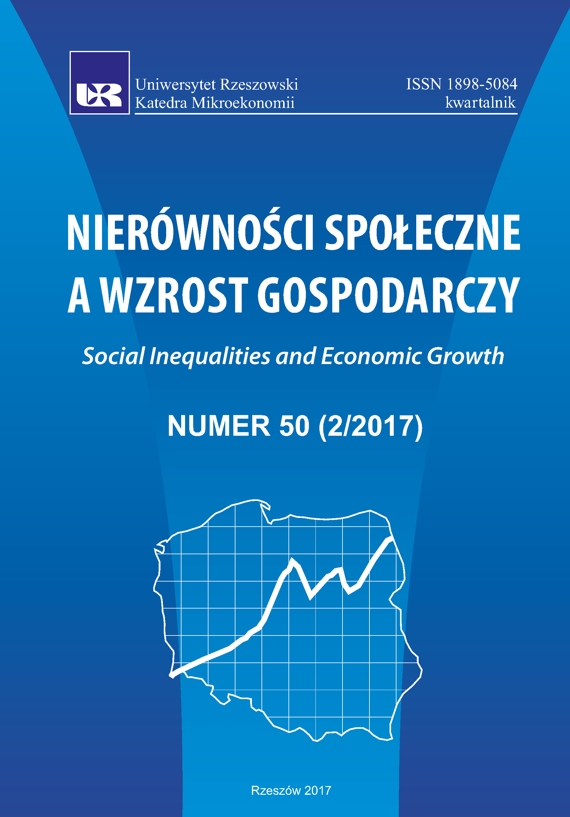Wzrost gospodarczy a stabilność makroekonomiczna krajów Europy Środkowo-Wschodniej na tle gospodarki Niemiec w latach 2000–2013
DOI:
https://doi.org/10.15584/nsawg.2017.2.5Słowa kluczowe:
wzrost gospodarczy, kryzys finansowy, stabilność gospodarcza, wskaźniki stabilizacji makroekonomicznejAbstrakt
Celem artykułu jest analiza stabilności gospodarek krajów Europy Centralnej i Wschodniej oraz badanie wpływu globalnego kryzysu na stabilność ekonomiczną badanych krajów europejskich. Analizą objęto trzynaście państw Europy Środkowej i Wschodniej, wśród których znajduje się dziesięć państw członkowskich Unii Europejskiej (Polska, Czechy, Słowacja, Węgry, Litwa, Łotwa, Estonia, Bułgaria, Rumunia i Grecja), oraz trzy kraje nienależące do UE (Białoruś, Ukraina, Mołdawia). Aby zrealizować cele badania i zweryfikować przyjęte hipotezy badawcze, przeprowadzono porównanie dynamiki wzrostu gospodarczego i stabilności gospodarczej krajów Europy Środkowej i Wschodniej z oceną stabilności gospodarki Niemiec w latach 2000–2013. Uwzględnienie w analizie gospodarki Niemiec ma istotne znaczenie, pozwala bowiem na porównanie sytuacji gospodarczej krajów słabiej rozwiniętych, w których dokonują się przemiany strukturalne, gospodarcze i polityczne, z sytuacją makroekonomiczną silnej gospodarki, jaką są Niemcy, w stosunkowo długim przedziale czasowym. Do oceny stabilności gospodarczej wykorzystano wskaźnik stabilizacji gospodarczej (MSP) wyznaczany na podstawie pięciu podstawowych wskaźników makroekonomicznych (stopa wzrostu PKB, stopa bezrobocia, stopa inflacji, deficyt budżetowy i zadłużenie sektora publicznego w relacji do PKB). Obok ogólnego wskaźnika stabilności obliczono także wskaźniki cząstkowe pozwalające na identyfikację obszarów mających największy wpływ na ogólną sytuację gospodarczą danego kraju oraz wskazanie, w jakim stopniu gospodarka danego kraju zależy od czynników wewnętrznych, a w jakim od uwarunkowań zewnętrznych.Downloads
Pobrania
Opublikowane
2020-11-13
Jak cytować
Malina, A., & Mierzwa, D. (2020). Wzrost gospodarczy a stabilność makroekonomiczna krajów Europy Środkowo-Wschodniej na tle gospodarki Niemiec w latach 2000–2013. Nierówności Społeczne a Wzrost Gospodarczy, 2(50), 89–105. https://doi.org/10.15584/nsawg.2017.2.5
Numer
Dział
Artykuły
Licencja
Prawa autorskie (c) 2017 Uniwersytet Rzeszowski

Utwór dostępny jest na licencji Creative Commons Uznanie autorstwa – Na tych samych warunkach 4.0 Miedzynarodowe.


